This article may contain links to products and services we use and recommend. We may receive compensation when you click on links to those products. For more information, see our Disclosure Policy.
They say great things come in small packages, and that is certainly true for Slovenia. Considering it’s such a small country (thirteen times smaller than New Zealand), there is a surprising variety of traditional Slovenian dishes you can sample here. According to our walking tour guide in Ljubljana, Slovenia has seven traditional regions, and each region has its own (take on Slovenian) cuisine.
If you’re a foodie you could spend a long time travelling around Slovenia and sampling all the delicious dishes the different regions have to offer. Our article though will concentrate on Western Slovenia. Why? Simply because this is the area we visited and where we ate our way around – literally.
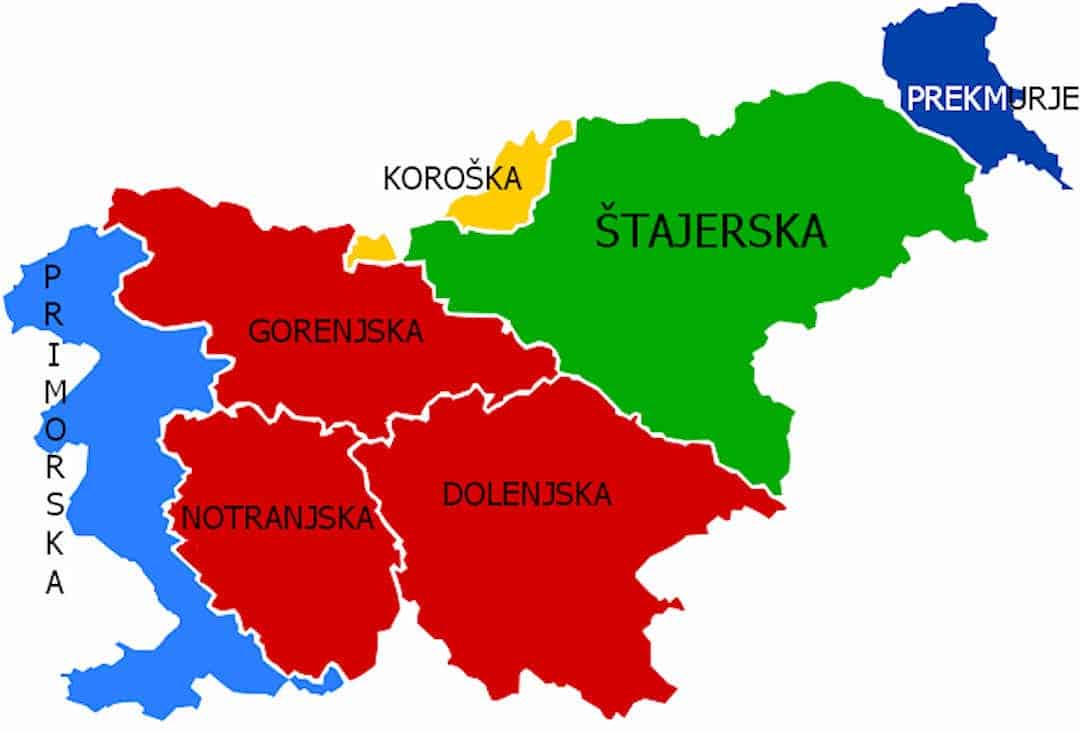
Each region in Slovenia has its own typical dishes | Image source: Folk Costume and Embroidery
What kind of food is Slovenia known for?
Part of the Austro-Hungarian empire (until World War One) and Italy (which annexed Western Slovenia after World War One), you can find Austrian, Hungarian and Italian influences in Slovenian cuisine. While it was also part of the former (Kingdom and later the Socialist Federal Republic of) Yugoslavia, Slovenian cuisine is distinctly different from the typical Balkan fare of ćevapčići and burek that its southern neighbours are renowned for (though you can get them in Slovenia as well).
Are you exploring the Balkan region and would love to sample its cuisine? If you’re looking for a list of traditional dishes in neighbouring Croatia we can recommend KitchenToast’s 76 Amazing Croatian Traditional Dishes You Must Try. Or check out the food chapters of our travel guides and itineraries for Croatia and Montenegro.
What food should you sample when travelling around Western Slovenia?
Most people visiting Slovenia will arrive in its capital Ljubljana. So, let’s start here.
Traditional dishes from Ljubljana
It’s hard to pin down dishes that originated in/around the Slovenian capital but the two we would suggest you try when in Ljubljana are Štruklji and Potica.
Štrukljis (Slovenian Dumplings) come in all variations – savoury or sweet; round like a ball or like slices of rolled dough; on its own or as a side dish. And each region (or even town/village) has its own version yet again. A great place to sample (quite) a few different varieties is My Dumplings Of Slovenia in Ljubljana.
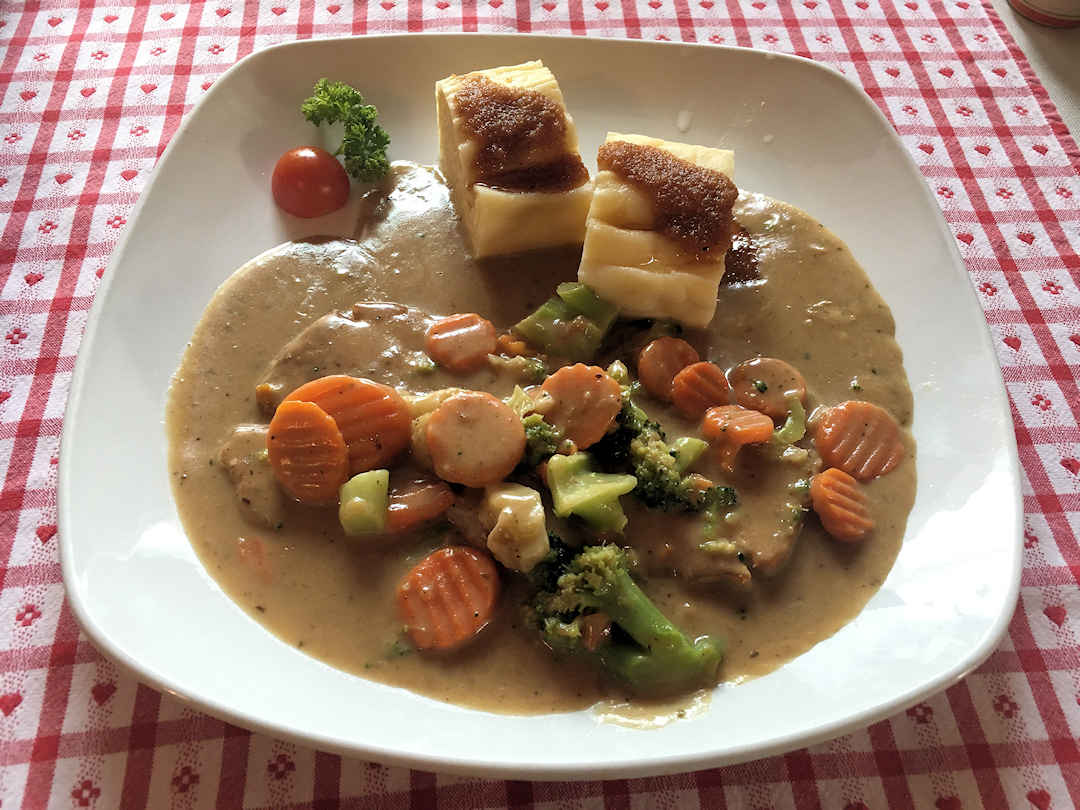
trukljis come in all variations: savoury and sweet; round like a ball or like slices of rolled dough; on its own or as a side dish
Potica is a traditional Slovenian holiday cake. It’s not too sweet and reminded me a bit of the Stollen, a holiday cake my grandmother used to make. Obviously, there are as many recipes as there are Slovenian (grand)mothers but if you want to make one at home, here is one recipe to check out.
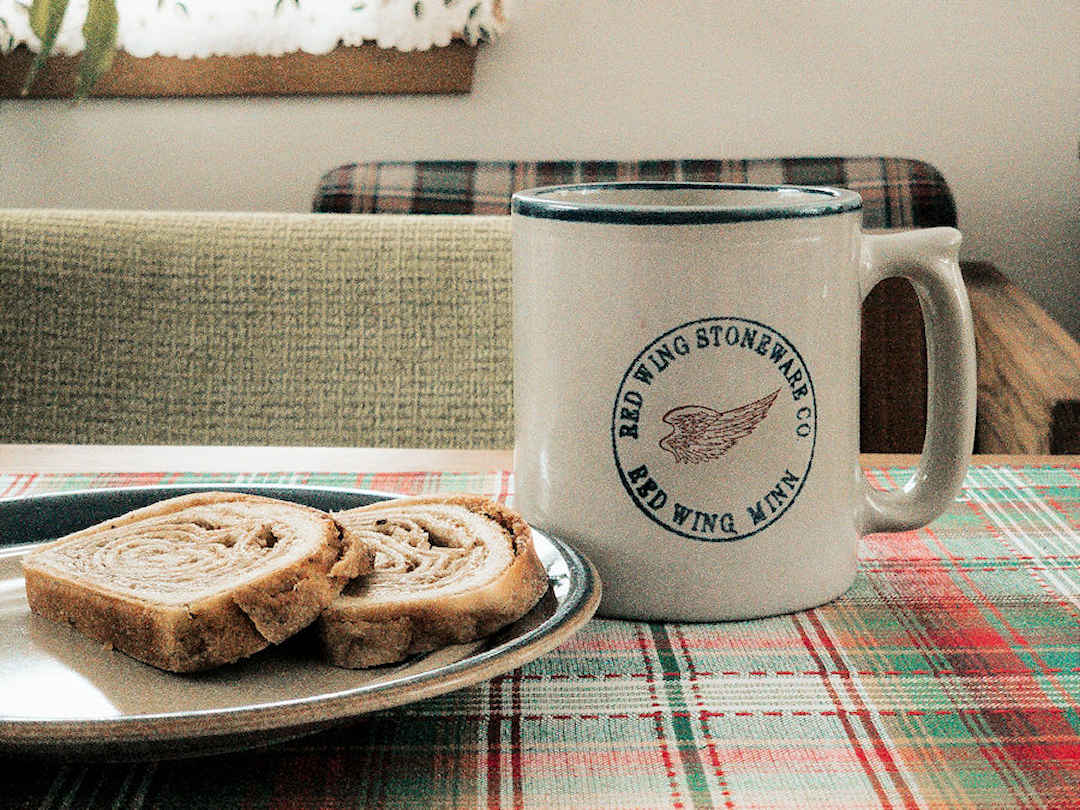
Potica is a traditional Slovenian holiday cake | Photo by Tyler Lastovich on Unsplash
Traditional dishes from Gorenjska
Gorenjska (Upper Carniola) is the area northwest of Ljubljana, known for picturesque Lake Bled and the winter sports centres of Kranjska Gora and Planica.
If you (only) make it to Bled, make sure you stop at the Park Cafe for Bled’s signature dessert Blejska Kremšnita (Cream Cake).
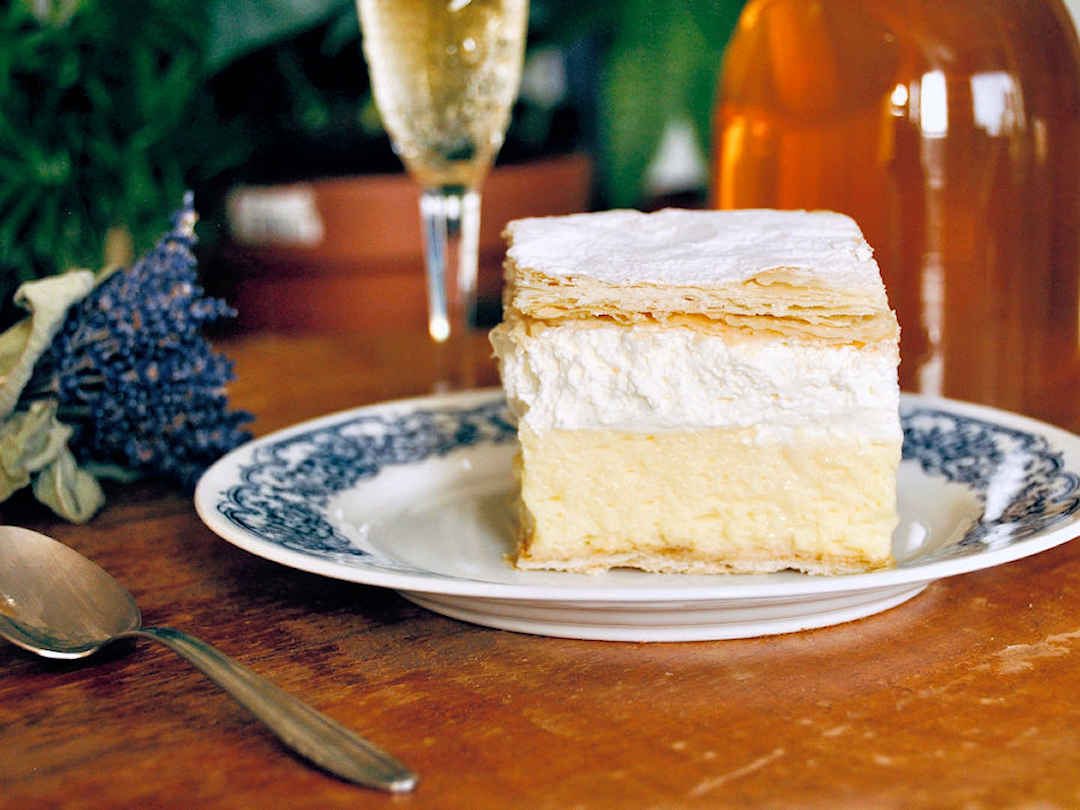
While the Austrians among you may argue that the Kranjska Klobasa (Carniolan Sausage) is Austrian, the region it originated from lies in present-day Slovenia and is a definite MUST-TRY when you visit the region.
Are there any special gastronomic events in Slovenia?
Yes, there are. And plenty. Not only was Slovenia awarded the title of European Region of Gastronomy in 2021, which means there will be an even greater focus on showcasing the country’s incredible cuisine to visitors for years to come. There are food and drink festivals throughout the year, offering you the opportunity to sample traditional Slovenian food and beverages all around the country. Take your pick. You’ll be spoiled for choice.

Carnolian Sausage is a definite MUST-TRY when you visit the region of Gorenjska in Slovenia
If you like sausages, another one you might want to try is Gorenjska’s version of Krvavica (Blood Sausage). It might sound gross to some to eat sausages made from boiled pig’s blood, but it’s actually quite delicious.
If a healthy vegetarian is more your thing, you might like Gorenjski Krapi (Buckwheat Ravioli). We tried them (with a delicious mushroom sauce) during a roadside stop along the serpentines leading up to Vršič Pass.

If you're vegetarian don't worry: Slovenia also has plenty of non-meat dishes
Traditional dishes from Primorska
Primorska (Slovene Littoral) is the westernmost region of Slovenia. Bordering Italy and under Italian control between World ar One and the creation of Slovenia (within the SFRY) after World War Two, it might be no surprise that this region has its own varieties of pasta and prosciutto.
Make sure you try Kraški Pršut (ham from the south-western Slovenian Karst region, cured without heat or smoke) from niche company Slovenia Food, and Bleki (square pasta) – with a delicious sauce or in a soup – when you visit the region.
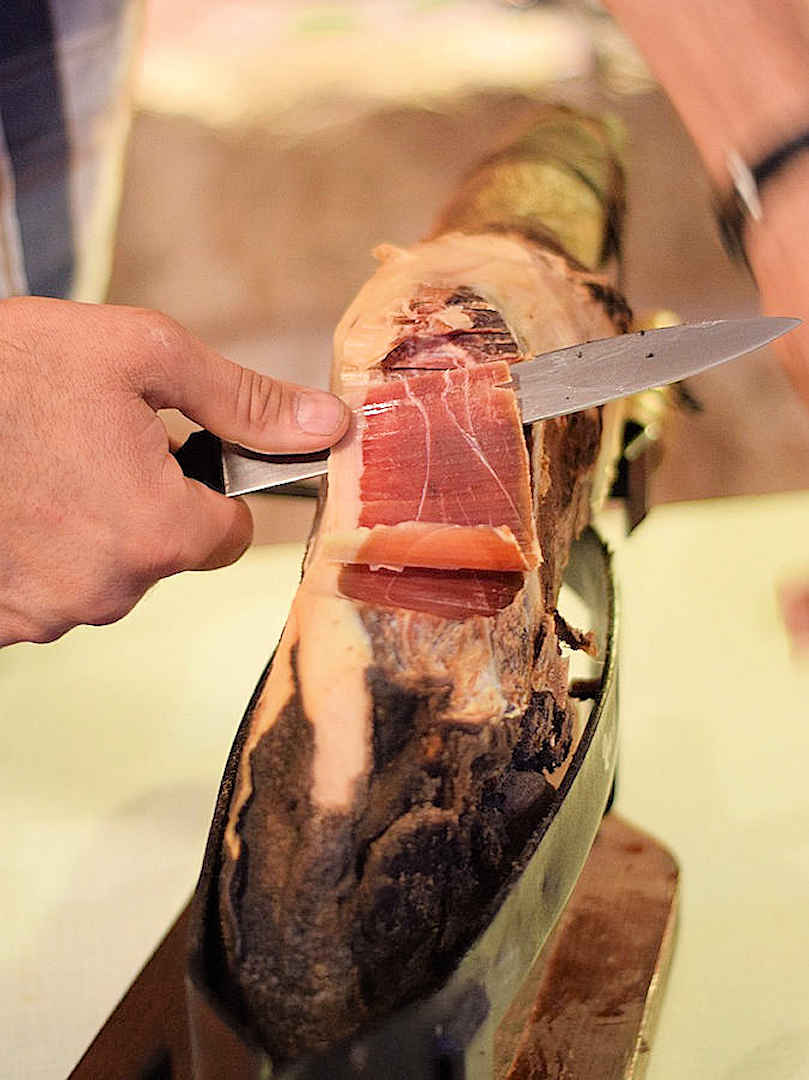
Prosciutto from the Karst region in south-western Slovenia is cured without heat or smoke | Photo by Brimfulof on Pixabay
Did you know that Slovenia is home to more than 500 brown bears? The dense forests of the country make a great habitat not only for bears but also for wolves and lynx.
While you can observe brown bears in their natural habitat, especially in Southern Slovenia (the regions of Notranjska and Dolenjska) you can also sample bear on a plate: Primorska is known for its game dishes, including venison, Divjega Prašiča (a wild boar dish we tried in Kobarid)… and bear (which is hunted under strict regulations to keep numbers at bay).
How do I recognise traditional Slovenian cuisine in a restaurant?
The most authentic Slovenian restaurants proudly use the markings of local heritage:
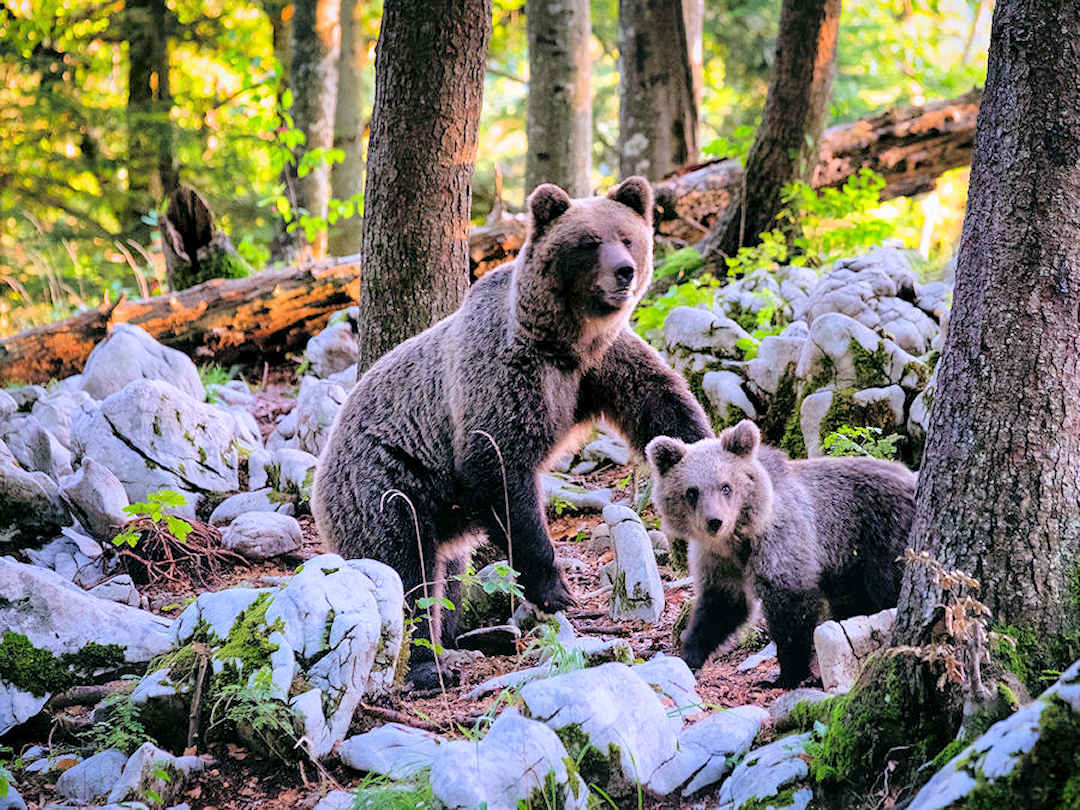
While you can eat bear meat dishes when visiting Slovenia, we prefer them living happily in the wild | Photo by Marco Secchi on Unsplash
Kranj has its sausage, Bled has its cream cake… and Tolmin has its very own version of Frika, a hearty shepherds dish which looks like a Spanish Tortilla. Tolminska Frika however tastes very different to its lookalike, being made with 1/3 potatoes and 2/3 cheese. You can take a guess which flavour overweighs.
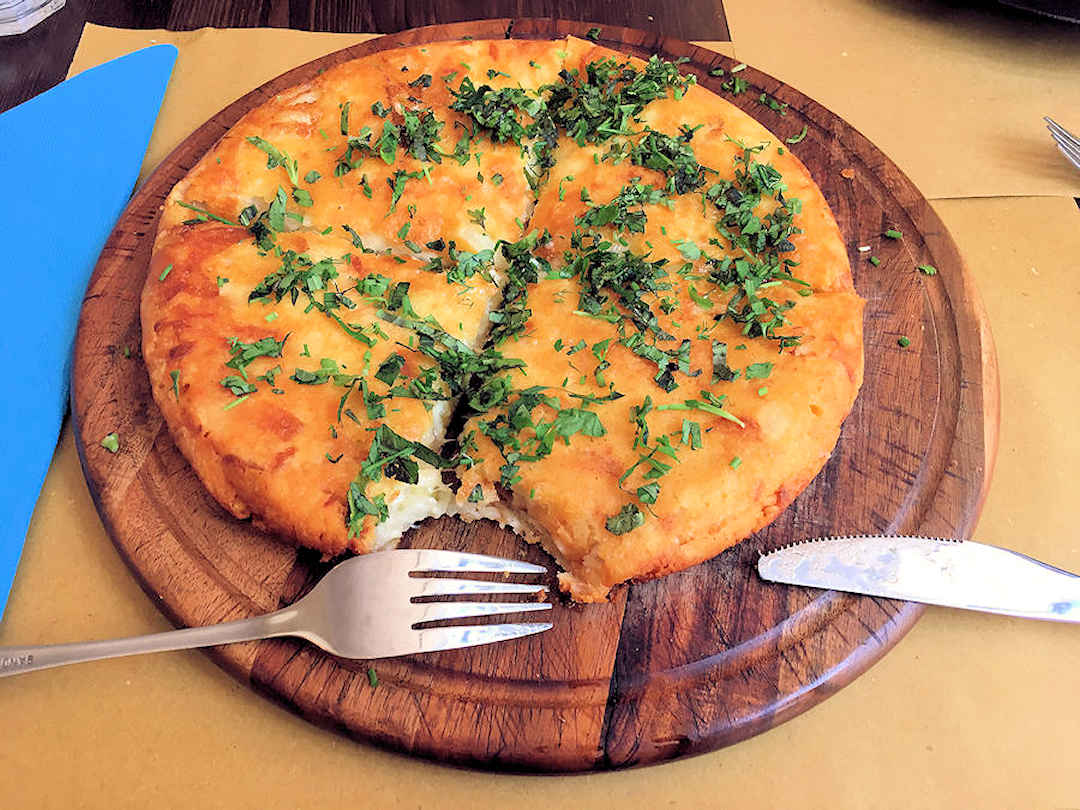
Tolminska Frika might look like Spanish Tortilla but tastes very differently
While in the Soča Valley, you can’t go past Kobariški Štruklji, Kobarid’s very own dumpling dessert. Made with walnuts and raisins, it is delicious. We tried it at Hiša Polonka… in Kobarid.

Where to eat traditional (Western) Slovenian food?
Ljubljana
- If you want to sample as many (different) štrukljis as your stomach can fathom head to My Dumplings Of Slovenia.
- For a low-cost bistro experience, try Hitra Žlica and/or Orient Express. We stumbled upon the latter by chance, following some office workers as they headed out for lunch. A bit hidden in the basement of an office building, it serves cheap, (almost) home-cooked meals, and the staff are super friendly.
- If you happen to visit Ljubljana on a Friday, check out Open Kitchen next to Ljubljana’s Cathedral, where some 40+ local restaurants offer their dishes at discounted prices. Beware though: The kitchen is not open when it rains.
- If you’ve still got room for dessert after all this tasting, head to Gelateria Romantika. Not only their gelato is to die for.
North-West Slovenia
- A great spot for lunch on your way to/from Lake Bled, Gostišče Tulipan in Lesce has a daily menu for less than EUR10. The portions were so large that we had the leftovers for dinner. One portion would have been enough for the two of us.
- For traditional dishes from the Soča Valley, you can’t go past Hiša Polonka in Kobarid. A relaxed atmosphere, delicious food and friendly service… what more could you ask for?

Sampling local food doesn't need to cost you an arm and a leg. We've had some of the best meals in simple bistros like this.
What else should you try while in Slovenia?
If you’re visiting Slovenia in the summer and you venture out into nature (which would be a sacrilege not to) chances are you’re passing shrubs of wild berries (raspberries, blueberries, strawberries, …). Nothing tastes better during a hike in the beautiful Julian Alps than freshly picked berries (apart from some fresh bread with cheese and prosciutto, and a cool beer maybe, but who likes to carry all of that up the mountain).
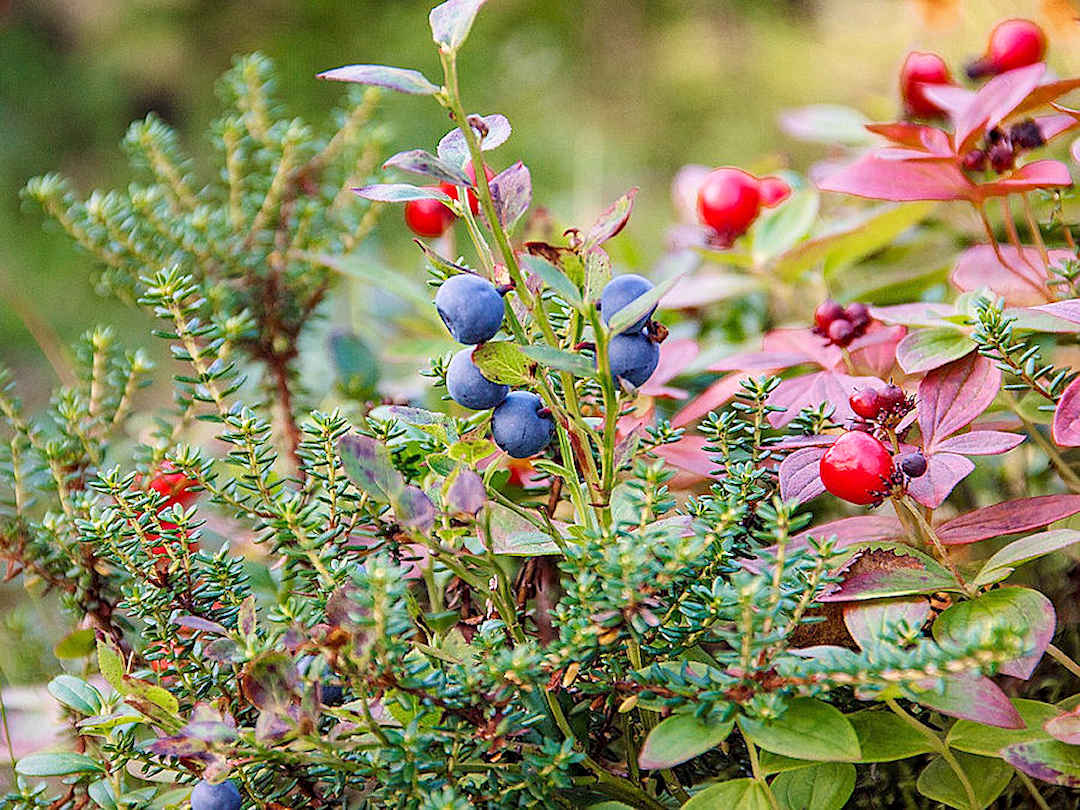
If you visit Slovenia in summer make sure you sample some wild berries on your hikes in the Julian Alps
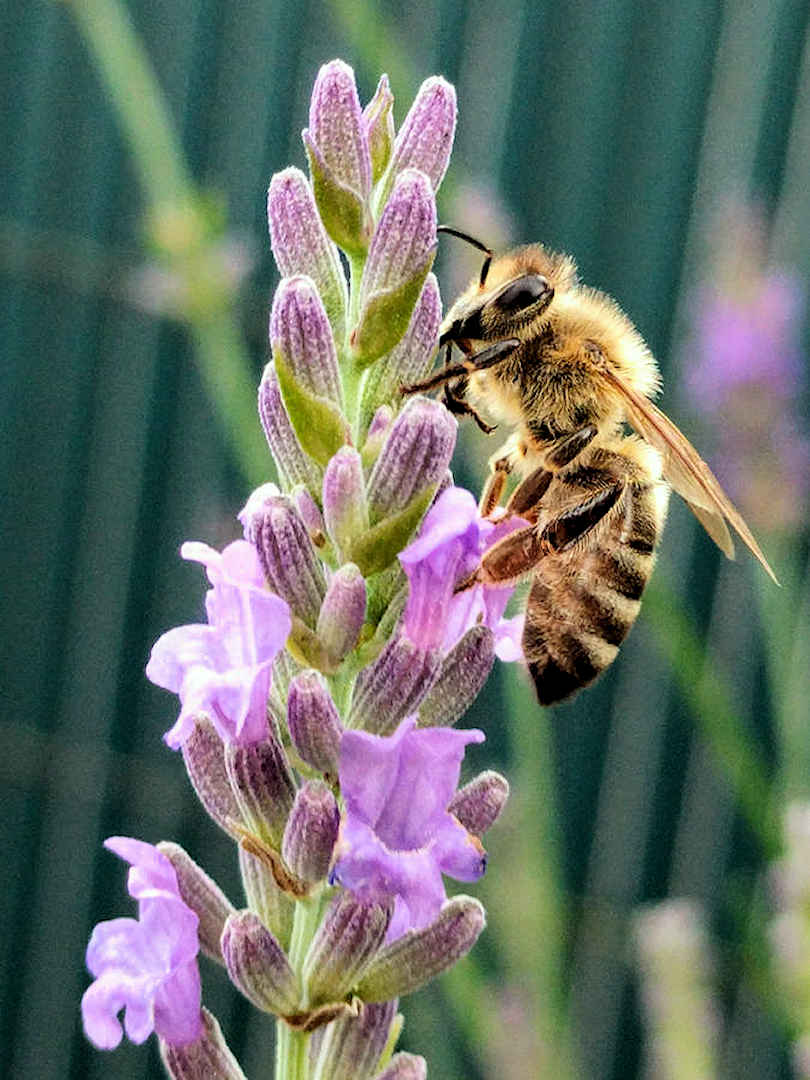
The Carniolan honey bee is native to Slovenia. No wonder that everyone seems to make their own honey here.

What beverages to sample when visiting Slovenia?
Well, first of all, tap water in Slovenia is drinkable/potable and tastes really nice. So, just (re)fill your reusable water bottle.
If a drop of alcohol (every now and then) is to your liking, make sure you sample
- Slovenian wine as the Slovenes keep 90% of their wine in the country (why export something you love, right?)
- one (or rather two, three, …) of the gazillion craft beers made in Slovenia; and
- the locally made liqueurs (made from blueberries, figs… you name it). I preferred those to the rakija served further south.
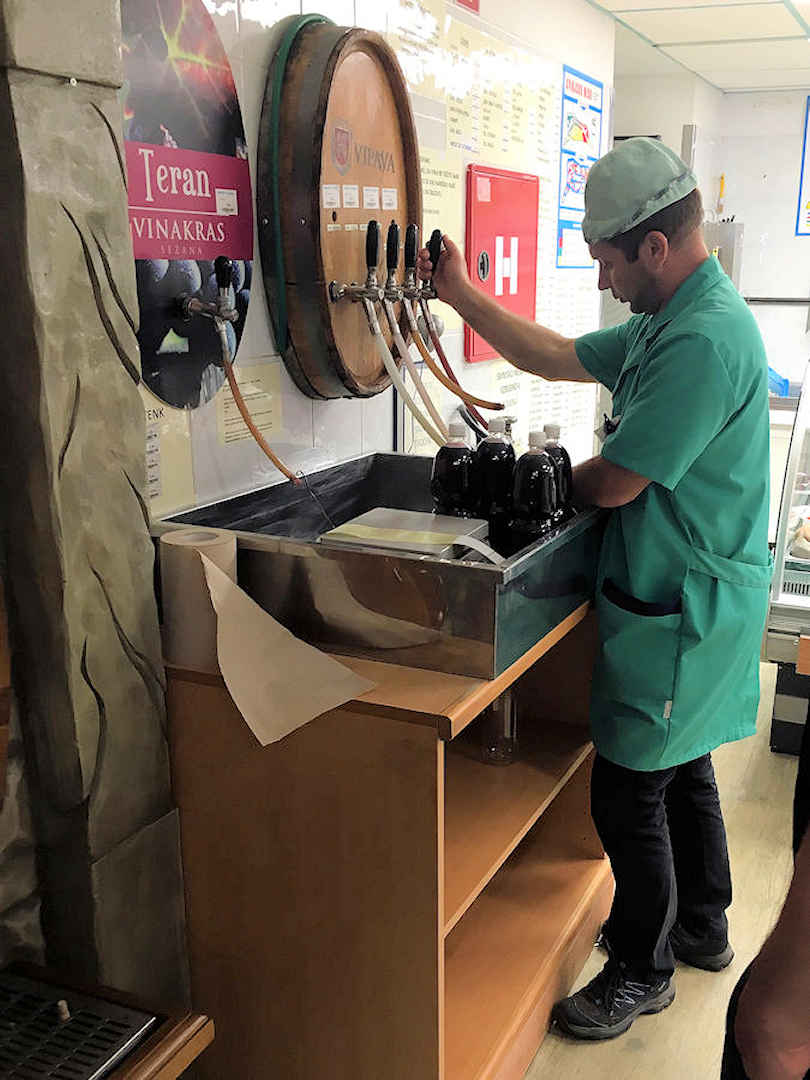
With 90% of Slovenian wine never leaving the country, make sure you sample a few (different) drops when visiting the country.
Have you visited (Western) Slovenia? What dishes have you tried and can recommend?
Before you go, if you liked our article and found it helpful, we would appreciate it if you could share it with your friends and family via the Share buttons below. Even better: Leave a short review on Trustpilot or Google, which would help us further build our online reputation as a (trustworthy and helpful) travel and lifestyle blog.


